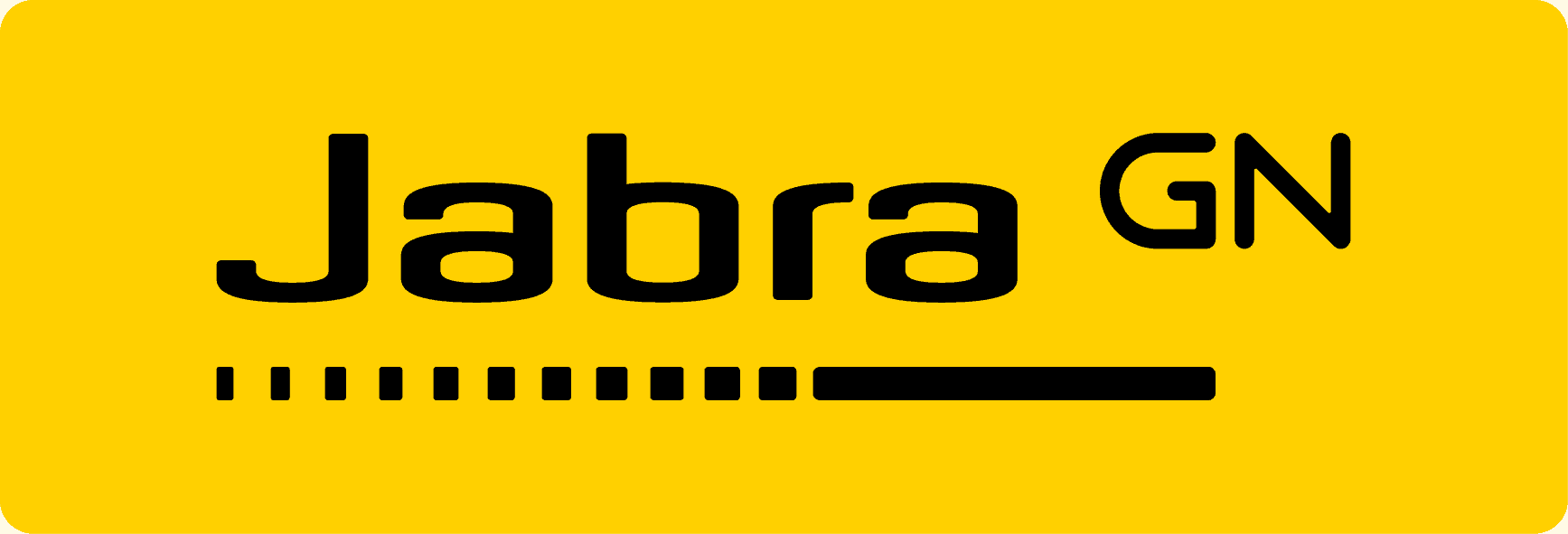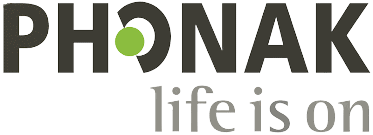Phonak vs. Beltone Hearing Aids
Our extensive testing and research found that Phonak hearing aids generally provide more advanced technology and comprehensive solutions for various degrees of hearing loss. Beltone’s primary advantages are its extensive network of dedicated hearing centers and personalized customer service approach. Both brands require professional fittings and typically cost several thousand dollars per pair, placing them in the premium hearing aid category.
Overall, both manufacturers deliver quality hearing solutions with unique strengths. Your ideal choice will depend on your hearing loss severity, technological needs, budget, and preference for ongoing support.
Key Findings
- Phonak hearing aids offer superior performance for those with any level of hearing loss, from mild to profound hearing loss.
- Beltone has over 1,500 dedicated hearing centers nationwide, making ongoing service and support convenient.
- Phonak was the first to offer universal Bluetooth connectivity, allowing streaming from any Bluetooth-enabled phone, not just smartphones.
- Beltone hearing aids can only be programmed at Beltone centers using their proprietary software, while most audiologists can service Phonak devices.
FYI: Both Phonak and Beltone are premium hearing aid brands with higher price points. For more affordable alternatives starting at under $1,000 per pair, check our guide to this year’s best cheap hearing aids.
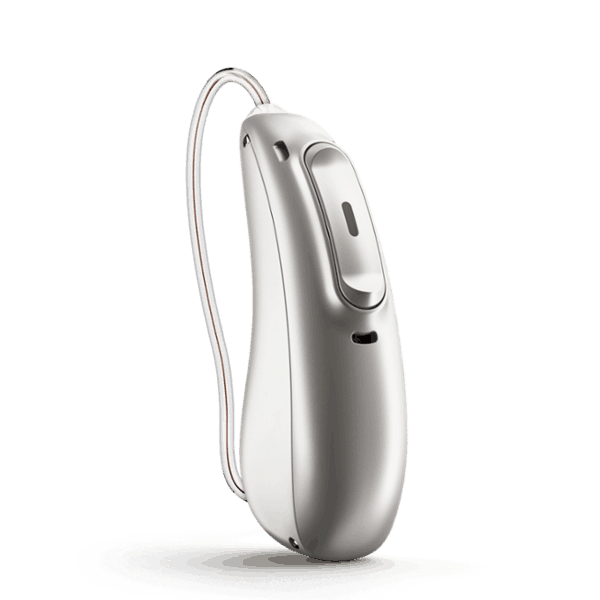
Phonak Hearing Aids Overview
Phonak has established itself as an innovation leader in hearing technology since pioneering the first behind-the-ear hearing aid in the 1970s. Their development path has consistently focused on improving sound quality and expanding connectivity options, resulting in hearing solutions that address the full spectrum of hearing challenges.
The current Phonak lineup centers on its advanced technology platforms:
- Lumity Platform: Provides exceptional sound clarity with features that adapt to different listening environments
- Infinio Platform: Their newest technology, currently available in their Audéo product line
What makes Phonak particularly notable is its diverse product range designed to address specific hearing needs:
- Audéo: Receiver-in-canal devices featuring their latest technology
- Naída: Powerful behind-the-ear solutions engineered explicitly for severe to profound hearing loss
- Virto: Custom-fitted options, including their titanium models for durability and discretion
- CROS/BiCROS: Specialized systems for single-sided hearing loss
- Lyric: A unique extended-wear device that can remain in place for months at a time
Phonak was the first manufacturer to develop universal Bluetooth connectivity that works with any Bluetooth-enabled phone, not just smartphones. This breakthrough eliminated the need for users to choose their hearing aids based on their phone preference, a significant advantage for many users.
Phonak hearing aids must be fitted by licensed hearing healthcare professionals. Once fitted, they can generally be serviced by most audiologists and hearing specialists, providing flexibility in ongoing care options.
>> Read More: ReSound vs. Phonak: Which Hearing Aid Brand Is Better?
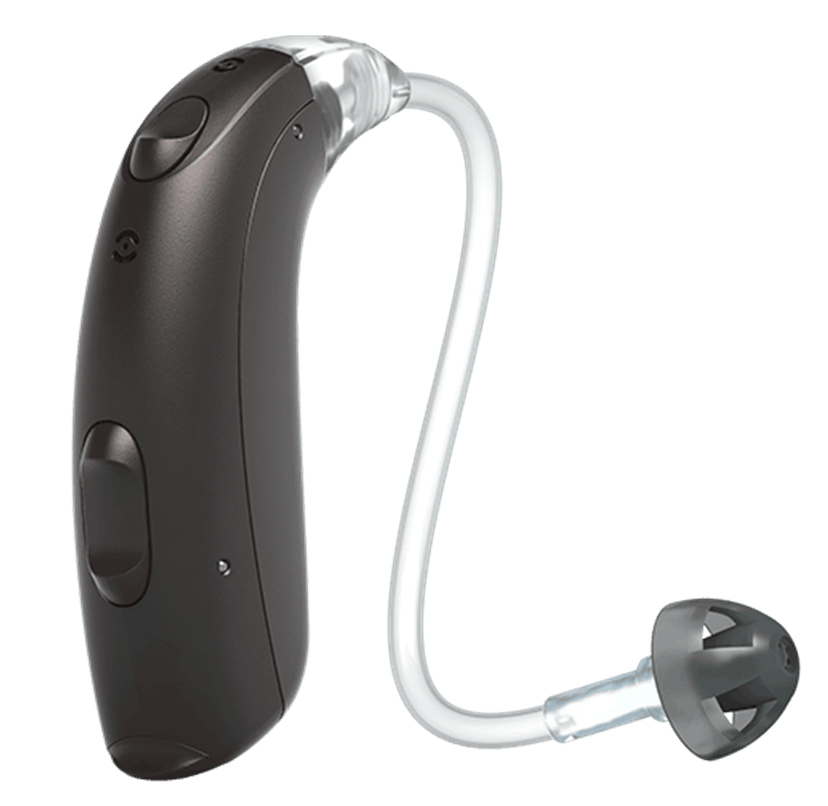
Beltone Hearing Aids Overview
Beltone combines advanced hearing technology with an exceptional service model built around its nationwide network of dedicated hearing centers. Its reputation for quality has been recognized with multiple industry awards, including a 2023 CES Innovation Award and an Edison Award for its myPal accessories.

The current Beltone product lineup includes:
- Beltone Serene: A new innovation, featuring Auracast technology that allows direct connection to public audio sources in venues like airports and lecture halls
- Beltone Achieve: Award-winning devices that deliver significantly improved speech clarity in challenging environments
- Beltone Rely: Their more budget-friendly option that maintains quality sound processing
- Beltone Boost Ultra: Specialized high-power devices for those with severe to profound hearing loss
What truly distinguishes Beltone is its unique business model built around community-based hearing centers. These facilities — often owned by local community members — provide consistent service and foster long-term customer relationships. This approach ensures personalized attention but requires users to work exclusively within the Beltone network for all service needs.
The cornerstone of Beltone’s customer care philosophy is its comprehensive BelCare program, which includes lifetime service at any Beltone location nationwide, annual hearing evaluations, and extended device protection. This warranty program is particularly valuable for those who travel frequently or plan to relocate.
Beltone hearing aids must be purchased through their authorized hearing centers, where customers receive personalized fittings and ongoing support. Their proprietary programming software means adjustments can only be made at Beltone facilities, creating consistency (and limitations) in service experience.
>> Read More: Hearing Aid Buying Guide
Performance Comparison
When comparing the performance of these premium hearing aid brands, several key aspects stand out in our testing and analysis:
Sound Quality and Processing
Both manufacturers excel in creating natural, clear sound experiences, though they utilize different approaches to sound processing technology.
Phonak’s Lumity and Infinio platforms feature sophisticated sound processing algorithms that adapt to different listening environments. Their technology excels at creating a natural soundscape with excellent spatial awareness. Independent research published in The Hearing Journal has shown that adaptive directionality systems like those used in Phonak devices can improve speech intelligibility in noisy environments.
Beltone’s Achieve and Serene models incorporate surround sound technology that provides a 360-degree listening experience. Their systems are particularly effective at isolating human speech from background noise, with their latest generation reportedly delivering sharper speech clarity compared to previous models. This directional focusing technology helps users maintain conversations even in noisy settings.
Environmental Adaptability
Both brands offer advanced solutions for complex listening environments like crowded restaurants or social gatherings. Phonak’s Ultra Focus technology allows users to narrowly focus on conversations directly in front of them while reducing peripheral noise. Beltone’s directional microphone systems similarly help isolate speech from background disturbances.
When dealing with outdoor settings and wind noise, Phonak’s WindBlock feature effectively reduces interference that commonly affects behind-the-ear models. Beltone’s models include similar wind noise reduction technology, though effectiveness varies by specific model and style.
Connectivity Features
Phonak pioneered universal Bluetooth connectivity that works with any Bluetooth-enabled device, giving users flexibility regardless of what type of phone they prefer. Their devices can connect directly to smartphones, tablets, and other compatible technology without requiring intermediate streaming accessories for basic functionality.
Beltone’s connectivity focuses on integrating accessories and compatible devices with its ecosystem. Their newest Serene model features Auracast broadcast technology. Auracast enables seamless connection to public audio sources, like televisions in waiting areas or lecture hall sound systems, without requiring technical expertise.
Power Management
Both manufacturers offer rechargeable and disposable battery options across their product lines. Phonak’s rechargeable models typically provide 24 hours of use per charge, while Beltone advertises up to 30 hours of battery life for its rechargeable models, representing excellent industry performance.
The availability of both power options allows users to choose based on their lifestyle and preferences. Rechargeable models offer convenience for most users, while disposable battery options provide flexibility for those who may not have regular access to charging capabilities.
Specialized Hearing Needs
Both manufacturers offer specialized solutions for users with severe to profound hearing loss. Phonak’s Naída models provide powerful amplification with features specifically designed for significant hearing challenges. Similarly, Beltone’s Boost Ultra comes in high-power and superpower configurations to address severe hearing needs.
According to the National Institute on Deafness and Other Communication Disorders, approximately 5 percent of adults aged 45 to 54 have disabling hearing loss. That figure increases dramatically to 10 percent for ages 55 to 64, 22 percent for ages 65 to 74, and 55 percent for those 75 and older. The availability of powerful options from both manufacturers serves this growing demographic need.
>> Read More: The Best Hearing Aids for an Active Lifestyle
Features Comparison
The functionality and special features of hearing aids significantly impact the daily user experience. Here’s how Phonak and Beltone compare.
Audio Processing Technology
Phonak’s technological approach centers on their AutoSense OS operating system, which automatically identifies and adapts to different sound environments. Their ActiveVent Receiver technology, available with Audéo Lumity rechargeable models, dynamically adjusts ventilation based on the listening situation, optimizing sound quality and comfort.
Beltone emphasizes its directional microphone system that isolates speech from background noise. Their latest models incorporate “3D sound environment processing” that helps users maintain awareness of sounds from all directions — above, below, in front, and behind. This spatial awareness provides more natural hearing experiences in dynamic environments.
Mobile Applications
Both manufacturers offer sophisticated smartphone applications that enhance user control and accessibility.
Phonak’s myPhonak app provides comprehensive control options, including:
- Volume adjustments for each ear individually
- Program selection for different environments
- Equalizer settings for personalized sound preferences
- Remote support sessions with hearing care professionals
- Hearing tracking statistics
Beltone offers several specialized applications:
- HearMax app for basic hearing aid control and adjustments
- HearPlus app for older Beltone models
- The Tinnitus Calmer app is specifically for managing tinnitus symptoms
- Apple Watch integration through a dedicated app
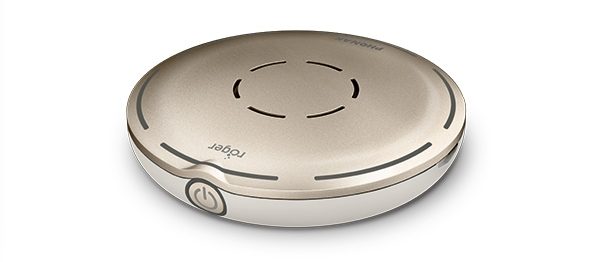
Accessory Ecosystems
Both manufacturers offer extensive accessories that expand functionality beyond fundamental hearing improvement.
Phonak’s accessory lineup includes:
- Roger microphone systems for challenging listening environments
- TV Connector for wireless television audio streaming
- PartnerMic for one-on-one conversations in noisy settings
- Remote Control accessories for those who prefer physical controls
Beltone’s complementary products include:
- MyPAL Micro and Pro microphones that extend hearing range up to 82 feet
- TV Link 2 and TV-Streamer+ for television audio
- Phone Link 2 for enhanced phone conversations
- Remote Control 2 for physical adjustment options
These accessories significantly expand the capability of hearing aids in specific challenging situations, such as group gatherings, watching television, and phone communications.
FYI: Studies from The International Journal of Audiology indicate that accessory microphones can improve speech recognition compared to hearing aids alone.
Specialized Features
Both manufacturers offer management solutions for users with tinnitus (ringing in the ears). Phonak incorporates tinnitus masking features directly into many of its hearing aid models. Beltone takes a different approach with its dedicated Tinnitus Calmer app, which provides sound therapy, relaxation exercises, and personalized management plans.
Phonak offers unique solutions for single-sided deafness through CROS technology, which transmits sound from the non-hearing side to the hearing ear. Beltone also offers CROS options for similar applications.
For extended wear needs, Phonak’s Lyric device can remain in the ear canal for months, providing a completely invisible solution that doesn’t require daily insertion or removal. Beltone doesn’t currently offer a comparable extended-wear option.
>> Read More: The Best Hearing Aids for Tinnitus Relief
Pricing Comparison
Hearing aids represent a significant investment, particularly for premium brands like Phonak and Beltone. Understanding the cost factors helps in making an informed decision.
Price Ranges
Based on our research and industry data, Phonak hearing aids typically cost between $3,000 and $6,000 per pair, depending on the specific model, technology level, and features. Their most advanced models with the latest platforms generally fall toward the higher end of this range.
Beltone hearing aids range from approximately $2,800 to $8,000 per pair, with their premium models like the Achieve and Serene typically commanding higher prices. Their Rely line represents their more affordable option while maintaining quality sound processing.
What Influences Cost
Several factors affect the final price you’ll pay for either brand:
- Technology level: More advanced features and processing capabilities increase cost
- Style of hearing aid: Custom and smaller devices typically cost more than standard BTE models
- Bundled services: Many providers include follow-up visits and adjustments in the purchase price
- Geographic location: Prices vary by region and specific provider
- Warranty length: Extended warranties may increase the initial purchase price
Neither manufacturer publishes standardized pricing online. Phonak prices vary by provider, while Beltone pricing is only available through in-person consultations at their hearing centers.
Payment Options
Most hearing healthcare providers offer financing plans that allow users to make monthly payments rather than pay the full amount up front. Insurance coverage for hearing aids varies widely. Medicare typically doesn’t cover hearing aids, though some Medicare Advantage plans include hearing benefits.
>> Read More: Does Insurance Cover Hearing Aids?
Warranties Comparison
The warranty and protection plans offered by these manufacturers represent one of the most significant differentiators in their business models:

Phonak Warranty Structure
Phonak’s warranty approach is decentralized, with terms varying based on the provider who dispenses their products:
- Standard coverage: Typically one to four years, depending on the specific model and provider
- What’s covered: Manufacturing defects and material failures
- Loss and damage: Some providers include loss and damage coverage, while others offer it as an add-on
- Service providers: Any audiologist familiar with Phonak can generally provide warranty service
- Global validity: The manufacturer’s warranty is recognized internationally, though service fees may apply
This provider-dependent approach means warranty terms are negotiable and can sometimes be extended or enhanced at the time of purchase. The flexibility in service locations can benefit those who travel or relocate frequently.
Beltone Warranty Structure
Beltone’s BelCare warranty program represents one of the most comprehensive protection plans in the industry:
- Standardized coverage: Consistent warranty terms regardless of purchase location
- Annual evaluations: Free yearly hearing assessments included
- Change in hearing: Two-year protection if your hearing significantly changes
- Loss coverage: One-time replacement for lost or stolen devices (with deductible)
- Nationwide service: Follow-up care available at any Beltone location
- Lifetime inspections: Free cleaning and checkups for the life of the hearing aids
This unified approach to warranty protection provides peace of mind and consistency in service experiences. Including coverage for changes in hearing needs is particularly valuable, as it protects your investment if your hearing deteriorates faster than expected.
Trial Periods
Both manufacturers offer trial periods that allow users to test their devices in real-world conditions before committing:
- Phonak: Trial periods typically range from 30 to 60 days, depending on the provider
- Beltone: Standard 30-day trial period across all locations
These trial periods are particularly important for first-time hearing aid users who may need time to adjust to amplified sound and determine if a specific model meets their needs.
Bottom Line
After a thorough evaluation of both manufacturers, we can recommend each brand for different user priorities:
Consider Phonak if:
- You value cutting-edge technology and universal connectivity.
- You prefer flexibility in where you receive service and support.
- You need specialized solutions for severe hearing loss or single-sided deafness.
- You travel internationally and may need service abroad.
- You anticipate changing hearing providers due to relocation.
- You use unique Bluetooth devices beyond standard smartphones.
Consider Beltone if:
- You prioritize comprehensive customer service and support.
- You value an all-inclusive warranty program with predictable coverage.
- You prefer having a consistent point of contact for all hearing needs.
- You live near a Beltone center and plan to remain in the area.
- You appreciate the community-based approach of locally owned centers.
- You would benefit from their specialized tinnitus management tools.
Both manufacturers deliver premium hearing solutions with advanced technology, though they prioritize different aspects of the hearing healthcare experience. Your preferences regarding technology versus service and your specific hearing needs should guide your decision.
Frequently Asked Questions
-
Which brand offers better value for money?
Value depends on individual priorities. Phonak typically delivers greater technological innovation and flexibility in service locations, while Beltone provides comprehensive customer care and warranty protection. For users prioritizing cutting-edge features, Phonak may represent better value. Those who value consistent service and comprehensive warranties might find better value with Beltone.
-
Are both brands suitable for severe hearing loss?
Yes, both manufacturers offer specialized solutions for severe to profound hearing loss. Phonak’s Naída line and Beltone’s Boost Ultra are specifically designed for these more challenging hearing situations, with powerful amplification and specialized features to address significant hearing deficits.
-
Can I switch providers after purchasing my hearing aids?
With Phonak, most audiologists can service and adjust their devices, allowing you to easily switch providers. Beltone hearing aids can only be programmed using proprietary software at Beltone centers, which limits your ability to receive adjustments elsewhere.
-
Do both brands offer rechargeable options?
Yes, both Phonak and Beltone offer rechargeable models across most of their product lines. Rechargeable technology has become increasingly standard in premium hearing aids, with battery life typically sufficient for a full day of use on a single charge.
-
What's the main difference between these brands?
The fundamental difference lies in their service models: Phonak operates through independent hearing professionals with flexible service options, while Beltone maintains a dedicated network of hearing centers with standardized protocols. This difference affects everything from initial purchase experience to ongoing support and warranty service.
-
Do Medicare or insurance plans cover these hearing aids?
Coverage varies widely. Original Medicare typically doesn’t cover hearing aids, though some Medicare Advantage plans include hearing benefits. Private insurance coverage depends on specific policies. Both brands work with insurance providers where coverage exists, and many offer financing options to make their devices more accessible.
-
What accessories are available for these hearing aids?
Both manufacturers offer extensive accessory options, including TV streamers, remote microphones, smartphone apps, and physical remote controls. These accessories enhance functionality in challenging listening situations and provide additional control options for users with different preferences and needs.
